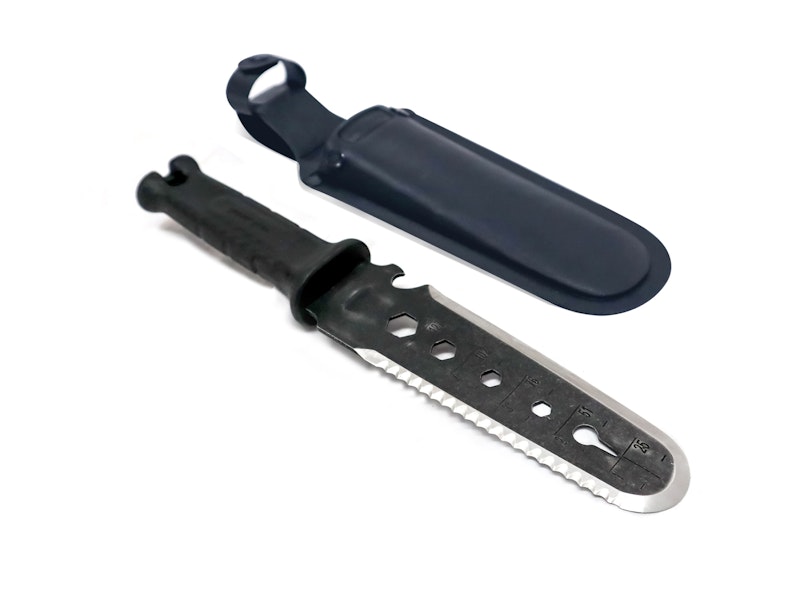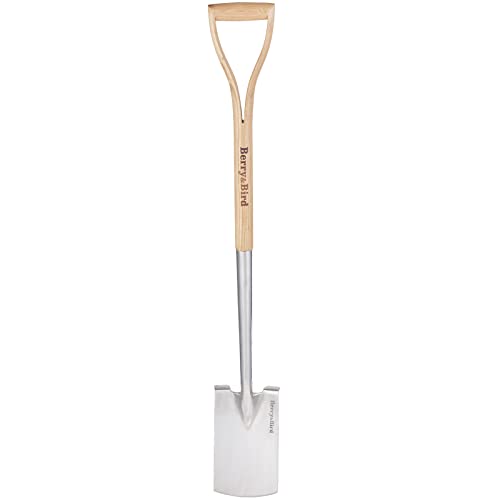When and how to divide rhubarb plants – for bumper harvests of mouth-watering stems year after year
Keep clumps healthy and vigorous by dividing rhubarb plants every 4-5 years
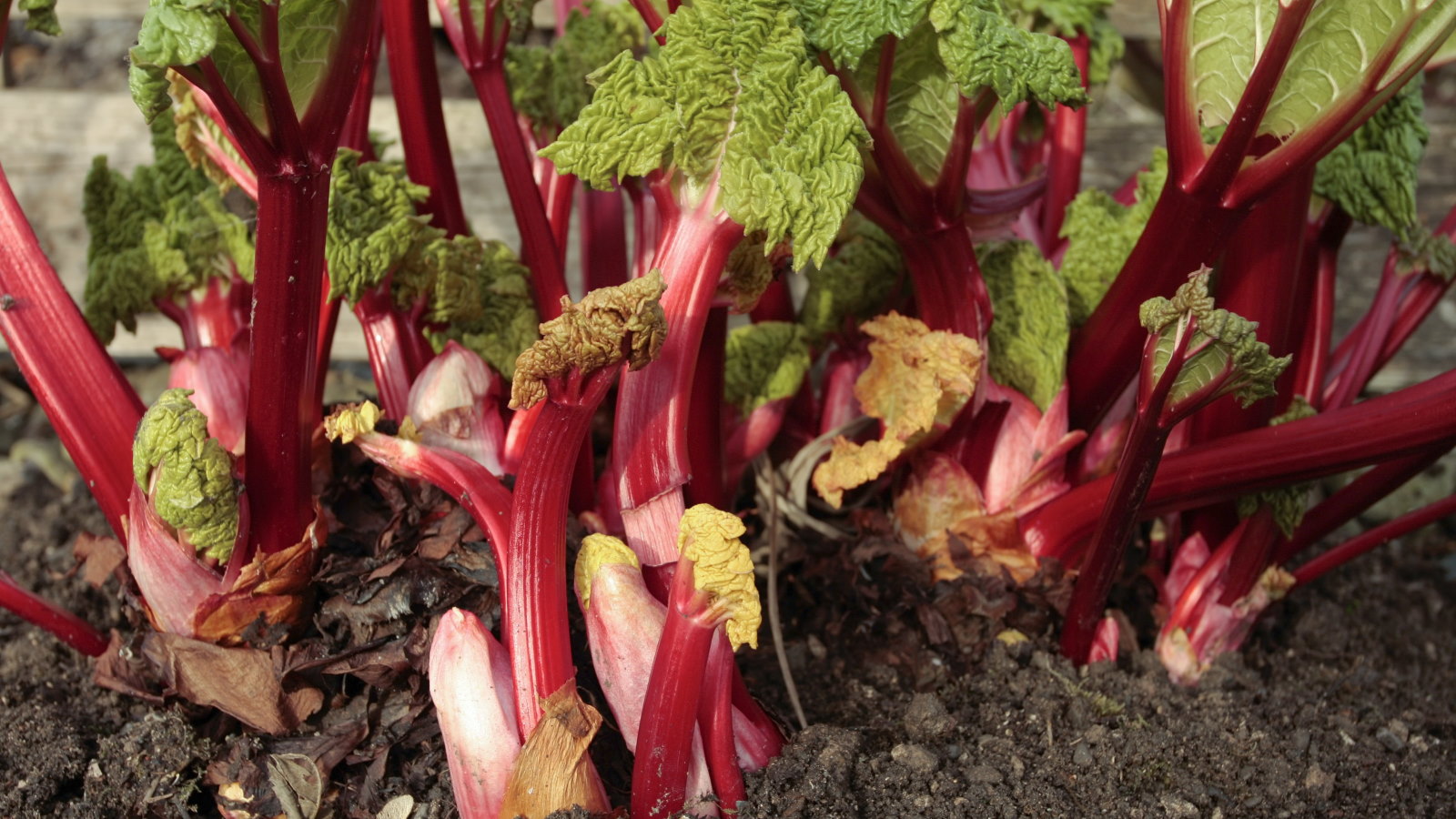

Rhubarb is an easy-to-grow and delicious crop. Whether you grow it for pies, jams, or crumbles, the tangy stalks can reliably appear year after year. For the best harvest, though, dividing rhubarb plants can rejuvenate clumps and keep them healthy and vigorous.
Growing rhubarb can be very simple; there were numerous plants in every kitchen garden I worked in as it was reliable and always popular. Producing dependable crops of fresh stems in late spring and early summer, the rhubarb was harvested for chefs or sold to the public.
The rhubarb crowns were regularly divided to keep them at their most productive, as older clumps start to produce smaller stalks as they get congested. Knowing when and how to divide rhubarb plants means you get new and refreshed plants for free to add to your garden. Or you can give clumps to friends, family, or neighbors.
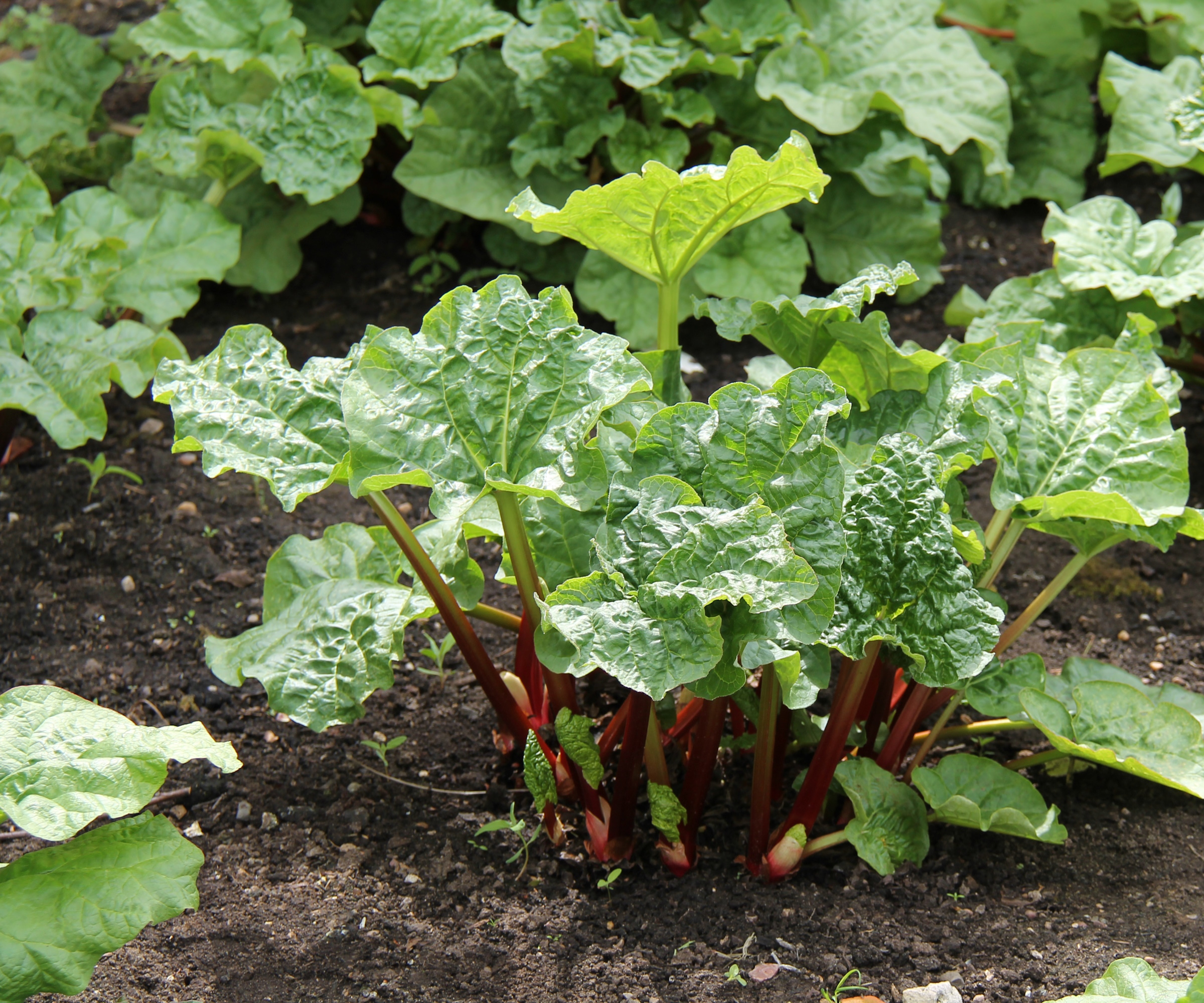
Dividing rhubarb plants helps give the best harvests long-term
A guide to dividing rhubarb crowns
Splitting rhubarb plants is a recommended way to rejuvenate the popular perennial vegetable. This guide explains the best time to divide rhubarb and the recommended ways to split rhubarb plants, using the experiences I picked up during my time as a professional gardener.
When is the best time to divide rhubarb?
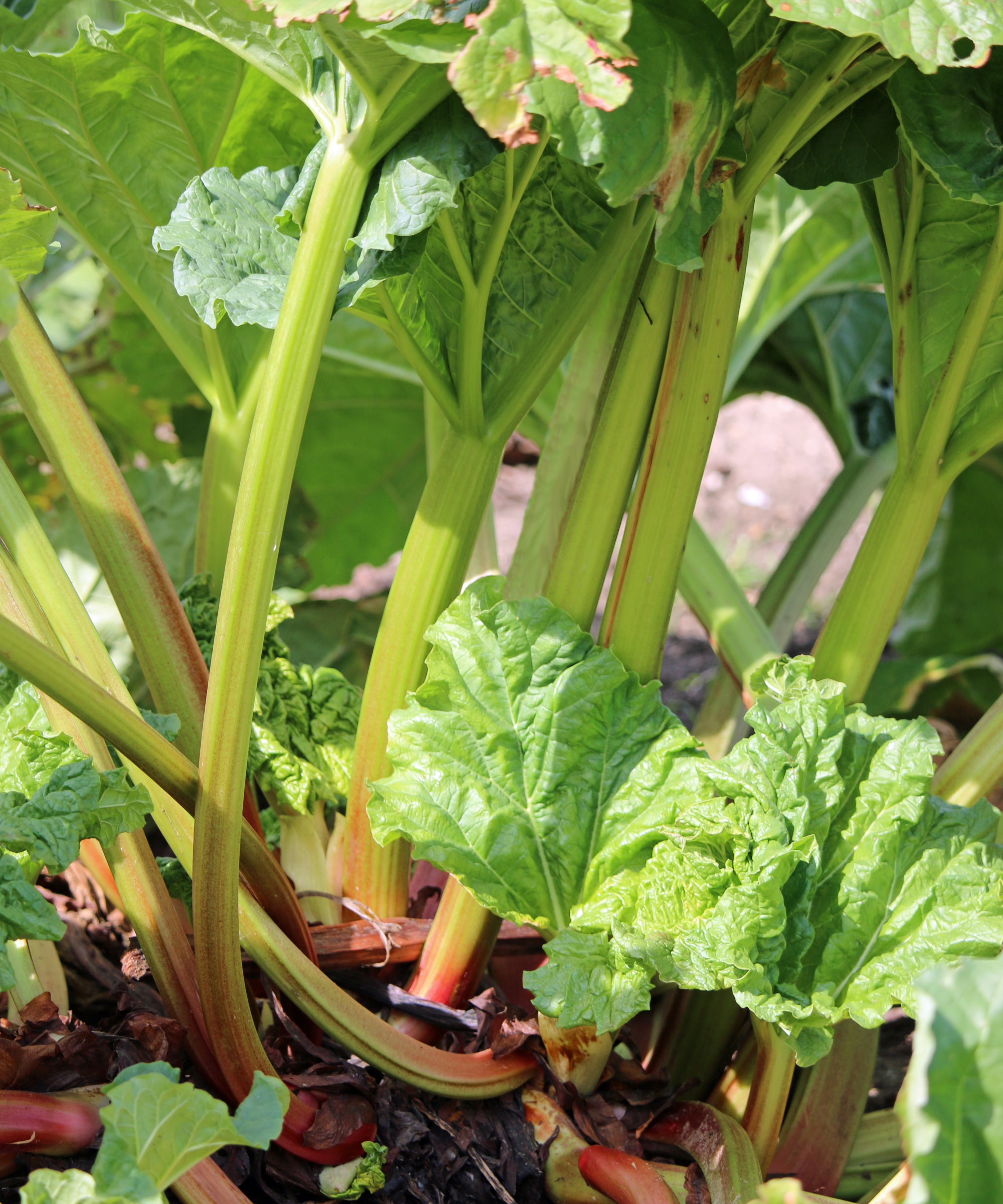
Congested rhubarb plants benefit from being split
Established rhubarb crowns will benefit from dividing once they reach around four years old. The plant’s productivity starts to wane around that time and dividing and transplanting rhubarb can reinvigorate older crowns, and give you new ones to plant around the kitchen garden.
The best times for dividing rhubarb plants are late fall or early spring. Dividing rhubarb crowns when dormant from late fall to spring means they can best cope with the trauma of being split. However, it would be a rhubarb mistake to divide the crowns in the middle of winter, leaving the plant highly susceptible to perishing in the colds and frosts.
Of the two preferable times, I would say spring is the best time to split rhubarb plants. Adding dividing rhubarb crowns to a spring gardening checklist means the plant is just starting to come out of dormancy and eager to grow. At this stage, the clump has lots of energy stored in the roots and will quickly put down roots once split and replanted.
Design expertise in your inbox – from inspiring decorating ideas and beautiful celebrity homes to practical gardening advice and shopping round-ups.
How to divide a rhubarb plant
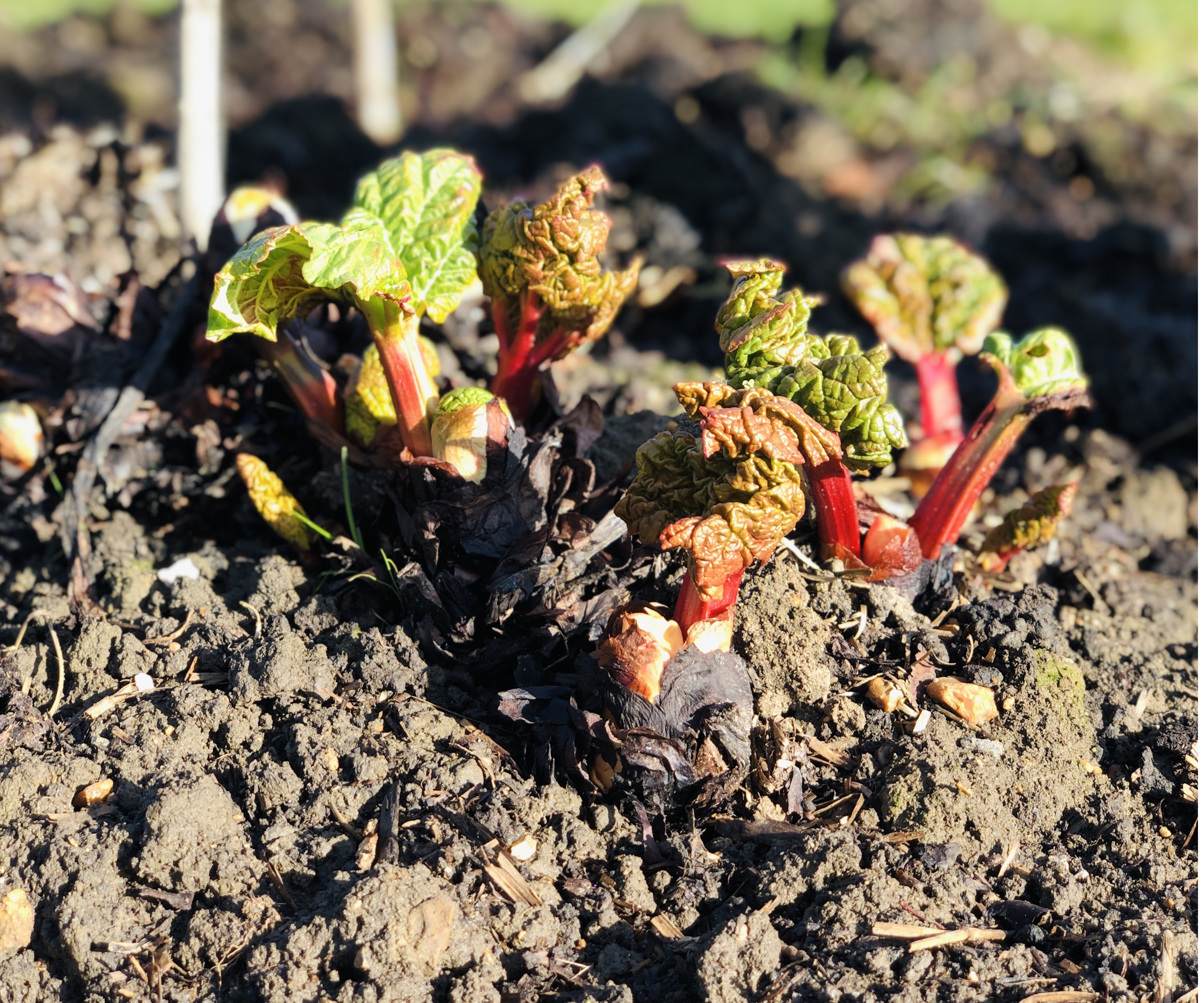
Spring is an ideal time for dividing rhubarb plants
Dividing rhubarb plants is a simple gardening task that can be done with common garden tools such as a spade, shovel, or a sharp knife. Make sure all the tools are sharp to make life easier when you separate the rhubarb crown to avoid hacking at the clump and causing unnecessary damage.
Start by digging around the rhubarb clump, working a wide circle around the plant and taking care not to slice through any of the rhubarb’s roots. You should then be able to get a spade underneath the plant to lever the clump out of the soil.
Inspect the clump to identify small buds on the plant - these will be prevalent in spring and another reason why spring might be the best time to divide rhubarb plants.
Divide the clump using your spade or knife into sections with at least one bud. Very old clumps will be very dense and more difficult to separate. Any section with one bud and a good selection of roots can grow into new plants, however, you can divide the clump into sections with 1-3 buds for larger plants. Trim away any damaged or diseased foliage or sections of root from the new clump using a pair of clean and sharp pruning shears.
Plant the rhubarb clumps straight away after separating them. If you cannot replant immediately, the clumps can be wrapped in damp cloths and kept in a cool and dark place for a few days.
Rhubarb thrives in a sunny position and rich, fertile, and well-draining soil type. Ideally, improve the new planting site by adding organic matter, such as compost or well-rotted manure, to give the new clumps a fantastic start in their new home.
Space each new clump at least three feet apart, and up to six feet apart, and dig a large planting hole to place the clump in. Each new clump should be planted a few inches deep and the buds want to be just underneath the surface. Press down the soil around the crowns to remove air pockets and ensure the clump is solid in its new position.
Cut off the largest leaves and water the plants well. Mulching around the new clump with compost will retain moisture in the soil and reduce competition from weeds - however, take care not to cover the crown itself as this can cause rot.
Do not harvest rhubarb for the first year after dividing and replanting. This allows the plant to take in the most energy during the season and concentrate on building a strong root system. Having that patience and knowing when to harvest rhubarb from split clumps will reward you with better stalks in the years ahead.
Shop tools for splitting rhubarb
FAQs
How long do rhubarb plants live?
Rhubarb crowns can live for 10-20 years if cared for properly, depending on the variety. The plants need little maintenance once established and their lifetime can be boosted by regularly dividing them.
As well as dividing rhubarb plants to keep them productive, forcing rhubarb is another great trick when growing the crop that rewards you with earlier crops of delicious stems.
Covering the crowns in mid-winter with a bucket, dustbin, or terracotta rhubarb pot will prevent light from reaching the rhubarb. An earlier harvest of paler and sweeter stems will be ready in early spring. If you grow forced rhubarb in this way, just remember not to force the same clump for another few years.

Drew has worked as a writer since 2008 and was also a professional gardener for many years. As a trained horticulturist, he worked in prestigious historic gardens, including Hanbury Hall and the world-famous Hidcote Manor Garden. He also spent time as a specialist kitchen gardener at Soho Farmhouse and Netherby Hall, where he grew vegetables, fruit, herbs, and cut flowers for restaurants. Drew has written for numerous print and online publications and is an allotment holder and garden blogger. He is shortlisted for the Digital Gardening Writer of the Year at the 2025 Garden Media Guild Awards.
